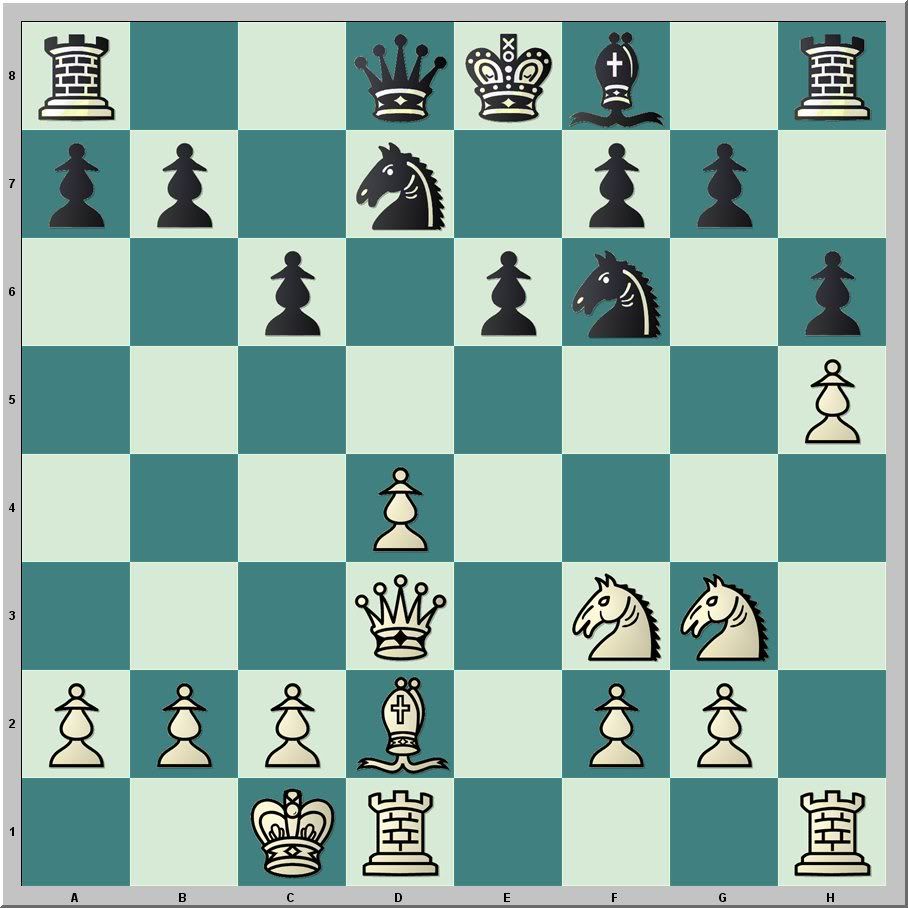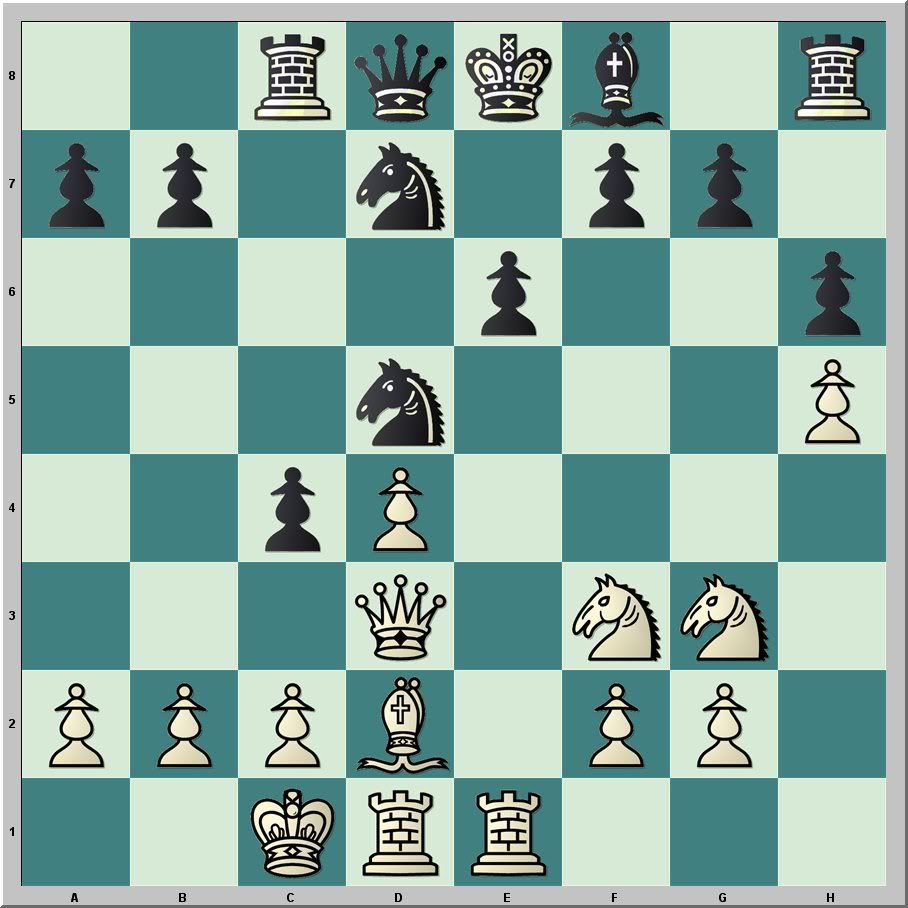In the final round, I was part of a pack battling for second place and was paired against an ambitious young player with a provisional B Class rating. I chose the Devil's Opening:
Joshi,K (1648) - Stripes,J (1843) [B19]
Eastern Washington Open, Spokane 2010
1.e4 c6 2.d4 d5 3.Nc3 dxe4 4.Nxe4 Bf5 5.Ng3 Bg6 6.h4 h6 7.Nf3 Nd7 8.h5 Bh7 9.Bd3 Bxd3 10.Qxd3 e6 11.Bd2 Ngf6 12.0–0–0

We have reached a fairly typical Caro-Kann position in under one minute of play. I took a walk while my clock ticked to decide whether I had the fighting spirit for something novel, or should hunker down and make my upstart opponent prove that White can secure an advantage.
c5?!
Either 12...Qc7 or 12...Be7 is fine.
13.Bf4 Nd5 14.Bd2 Rc8 15.Rhe1 c4!?
Again either 15...Qc7 or 15...Be7 is quite reasonable.

Now Kairav went into a long think. There are only two moves worth looking at, I thought, both bad. The queen must move to e4 or e2.
16.Rxe6+!
The blow to the back of the head, which I thought was a desperate gamble. He is lost, so he plays for some cheap checks. I was wrong.
16... fxe6??+-
16...Be7 is the only move 17.Rxe7+ ( 17.Qf5 c3) 17...Nxe7 and White has an advantage.
17.Qg6+ Ke7 18.Nf5+ (I thought this move was impossible) exf5 19.Re1+
I resigned in view of 19... Ne3 20.Rxe3+ Ne5 21.Rxe5+ Kd7 22.Rd5+ Kc7 23.Rxd8 Rxd8+-
1–0
Kairav Joshi will be over 1800 soon. He's also a terrific chess organizer in Coeur d'Alene, Idaho.














Hi James! I remember glancing over at this game and thinking "...c4-c3 looks really strong!" Then I glanced back over a few minutes later and you're toast. How fortunes can change.
ReplyDeleteThanks for the comment David. 16.Rxe6+ was not even on my radar. Perhaps if I played the Caro-Cann more regularly, it would have been. I did look at 16...Be7, but too easily dismissed 18.Nf5+ in my analysis and so underestimated the danger. It was a worthwhile lesson to lose this game so quickly.
ReplyDeleteAll i can say is "OUCH".
ReplyDeleteI will remember 10-10-10 forever. This game made my day that day! Perhaps even made my month or year!! The joy of playing Nf5+! is still fresh!!
ReplyDeleteI'm looking forward to playing you again soon! Sicilian next time? ;)
"He is lost, so he plays for some cheap checks. I was wrong."
ReplyDeleteHow were you wrong? It looks as if he has chosen to sharpen the play. I really like Black's position here, and my first reaction on seeing Rxe6 is "Good a free tempo, I need that! (as Black needs quite a few more developing tempi, IMO)" Naturally, that rook is also attacking from the sixth rank, squares such as h6 and f6, have to guard against that.
Let's say you want that free rook, after ..Be7 (that's what I would have played there) he has a rook and queen hanging. Say he plays Qe4, now you could take the rook, a tempo up, plus an escape square on f8 for your king.
Or perhaps you could 'castle into it' a bit with Ndf6 as a follow-up. For better or worse, it doesn't seem as if many 1600+ players want to go down quietly.
To Linux:
ReplyDeleteBe7 is the only move black can play. It doesn't give black a free rook. White still has an advantage after black plays Be7 - though the advantage is little.
This comment has been removed by the author.
ReplyDelete